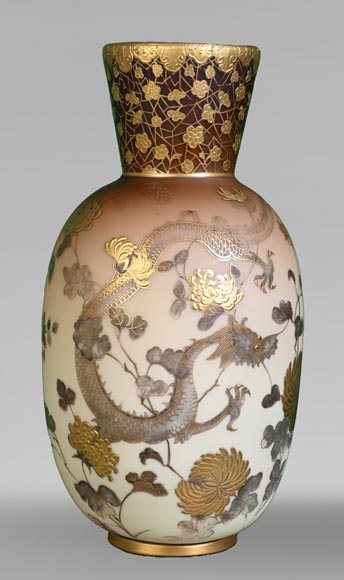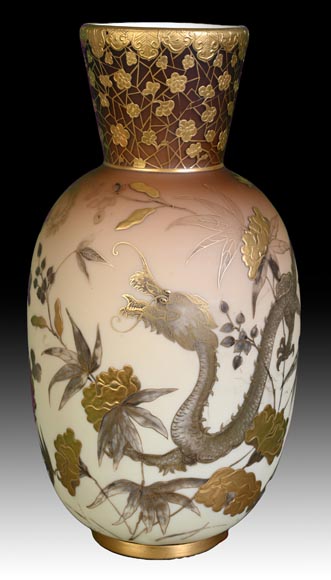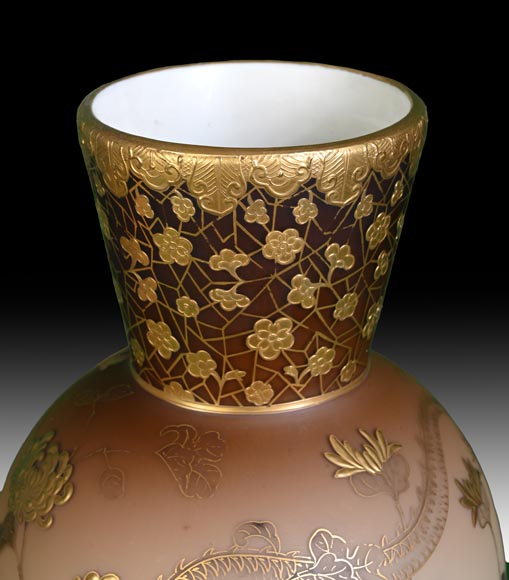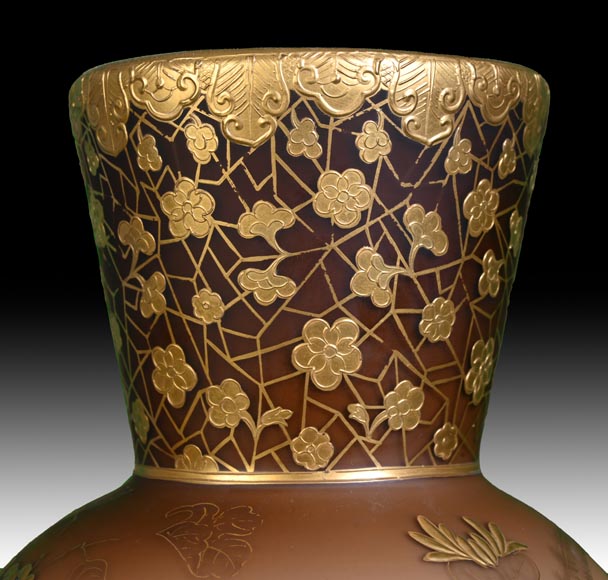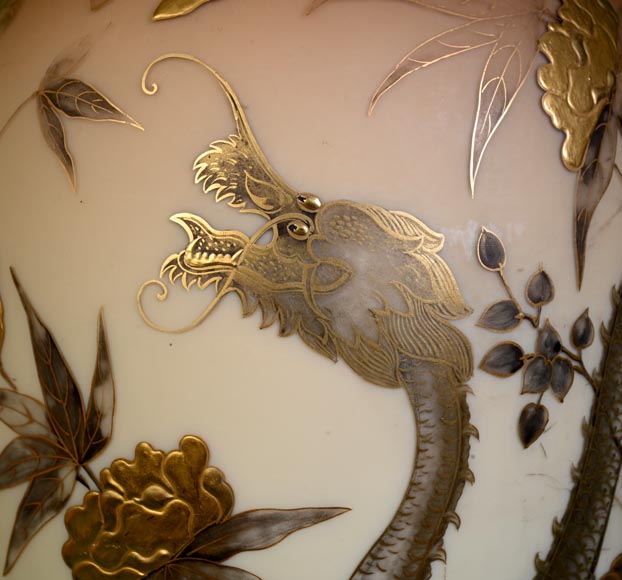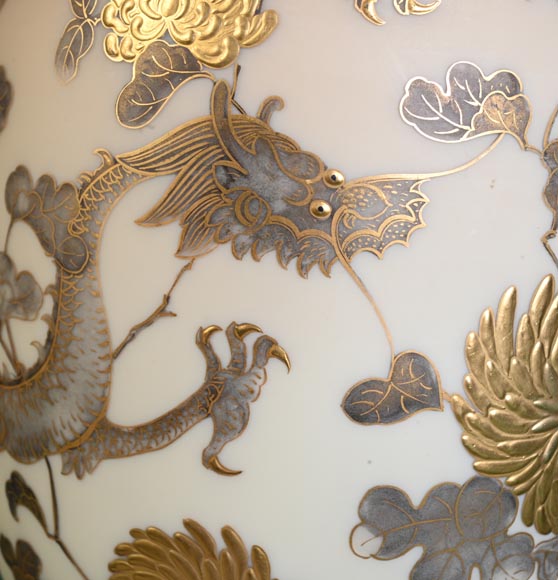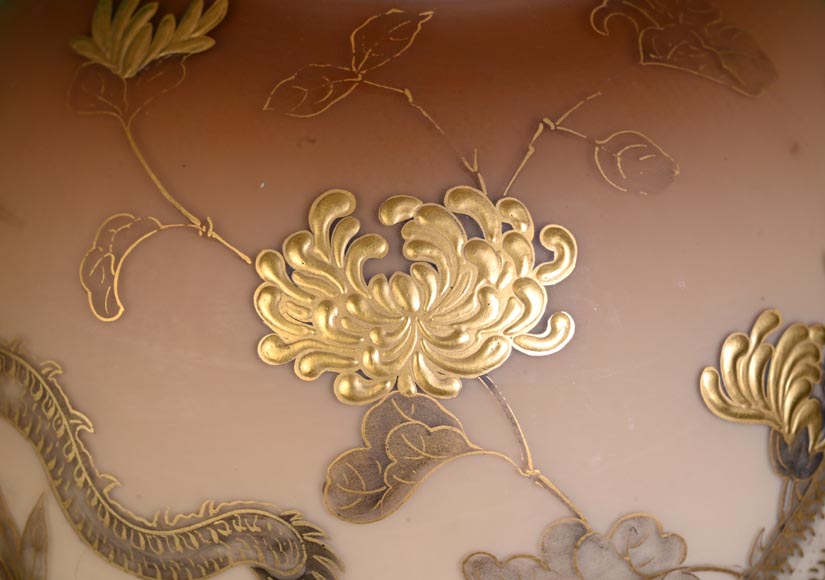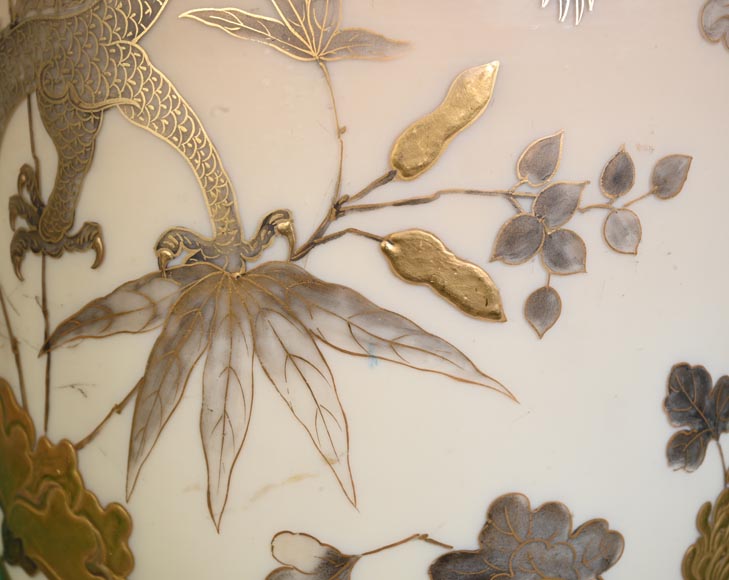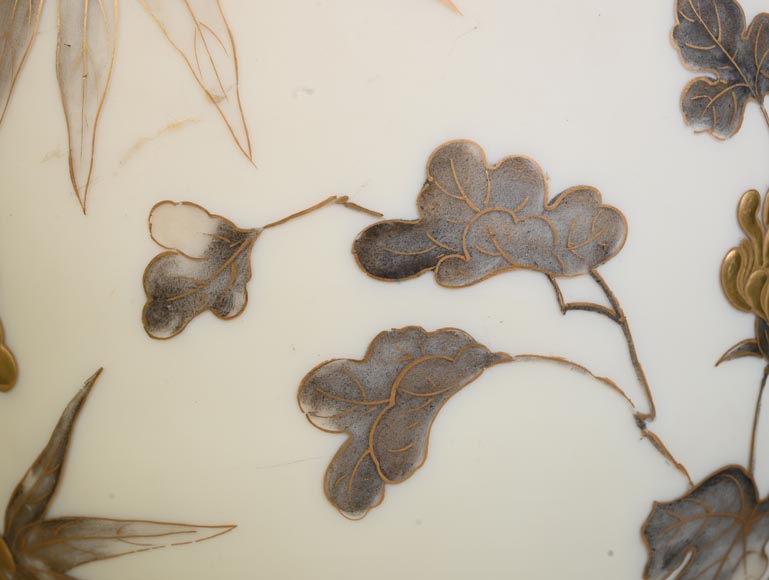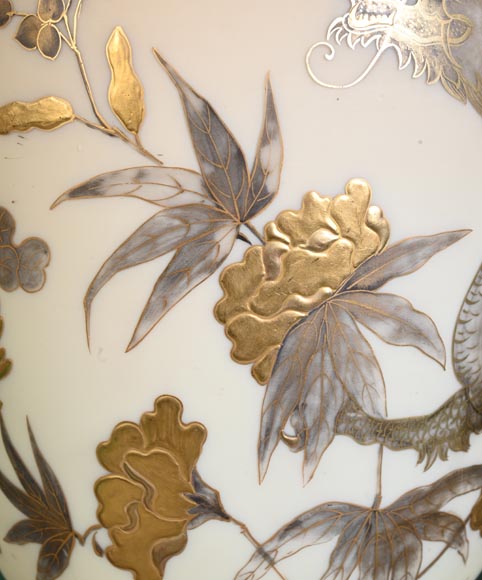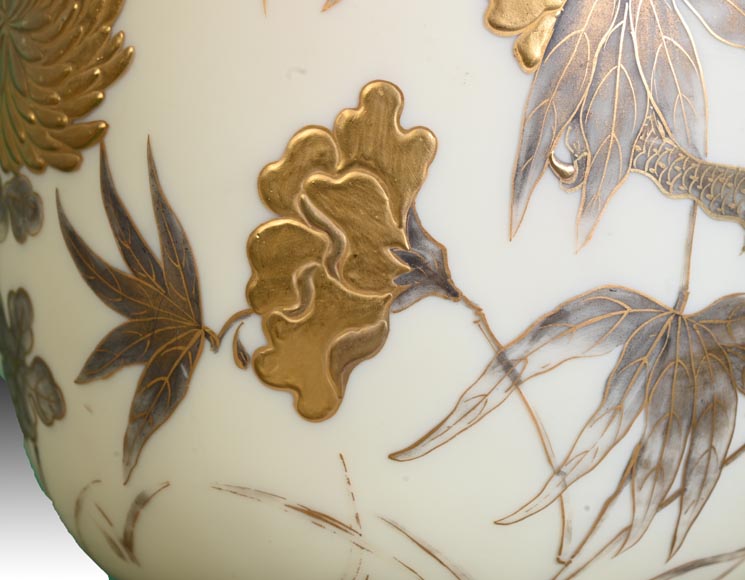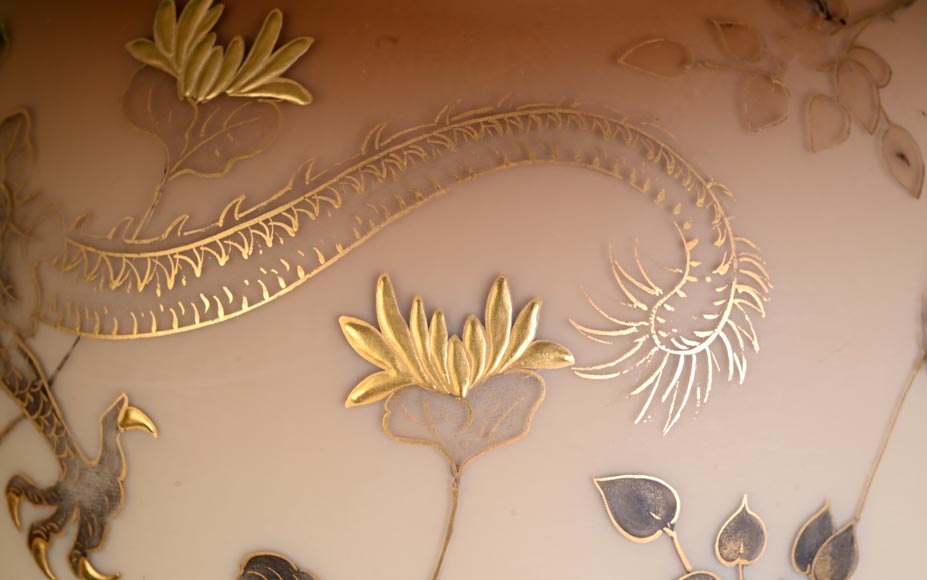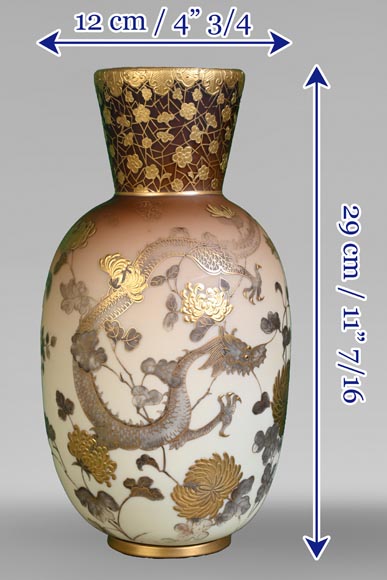Style Japonism, Chinoiserie / Ref.15383
Jules Barbe for Thomas Webb (attributed to), Japanese-style Vase with Dragons, late 19th Century
Dimensions
Height 11'' ⅜ 29cm
diameter: 4'' ¾ 12cm
Origin:
France, 19th century
This vase with a Japanese-style design in double-layered opaline glass was likely created at the end of the 19th century, when the vogue for Far Eastern objects and works inspired by them was at its peak. It is attributed to Jules Barbe for Thomas Webb.
Thomas Webb founded his company in 1837 in Stourbridge, England. In 1842, the business was called T. Webb & Co. before becoming Thomas Webb & Sons. Renowned for its cameo glass, it was noted by the jury at the 1889 Universal Exposition in Paris. The jury report praised its creations: “There is no need to reiterate the remarkable qualities of this manufacture. As always, the whiteness and clarity of the crystal were complete, and its brilliance was enhanced by the cutting and especially by the exceptional polish that characterizes it” (p. 150). Jules Barbe produced several vases as part of his collaboration with Thomas Webb & Sons.
The décor of this one is highly intricate. The rounded belly features a subtle gradient ranging from milky white at the bottom to deep brown at the top of the neck. It is adorned with two dragons winding among leaves reminiscent of Japanese maple and various flowers. The straight neck flares at the top and is decorated with stylized branches and cherry blossoms (Sakura). The decorations are executed in gold, with some shades of gray.
The enthusiasm that arose in the second half of the 19th century, particularly following Japan’s reopening to international trade and its participation in the 1867 Universal Exhibition, became known as “Japonism”. This movement caused a significant revolution in Western art, strongly inspiring many artists across all fields. This piece demonstrates the profound influence of Japanese art on Western creations at the end of the 19th century, both in its subject (notably with dragons, symbols of strength and power in East Asian culture, and the sakura, characteristic of its flora) and in its execution (mainly in the deliberate lack of depth, a hallmark of Japanese prints).
Informations
Price: on request
Recommended for you :
Dimensions:
Width: 14
Height: 26
Depth: 9
Diameter: 9
Dimensions:
Height: 26
Diameter: 11
Dimensions:
Width: 38
Height: 15
Depth: 20
Dimensions:
Width: 25
Height: 40
Diameter: 50
Dimensions:
Height: 32
Diameter: 15
Dimensions:
Height: 38
Diameter: 15
Dimensions:
Height: 26
Depth: 14
Dimensions:
Width: 9
Height: 25
Depth: 9
Dimensions:
Width: 15
Height: 38
Depth: 15
Dimensions:
Width: 29
Height: 11
Depth: 21
Dimensions:
Width: 17
Height: 25
Depth: 11
Dimensions:
Width: 14
Height: 29
Depth: 9



